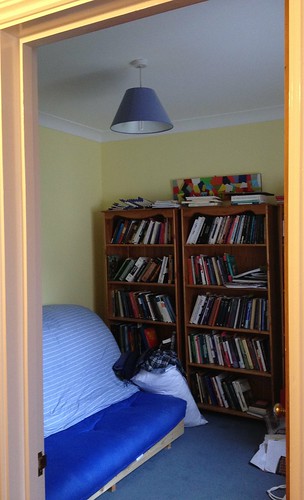 If you have encountered me in a pædagogical situation, you have probably heard me moan about the general quality of student writing. If you are a student about whose writing I have moaned, you have probably heard (or “read”) me complain about passive constructions.
If you have encountered me in a pædagogical situation, you have probably heard me moan about the general quality of student writing. If you are a student about whose writing I have moaned, you have probably heard (or “read”) me complain about passive constructions.
Now, I must at this point note that the linguists over at Language Log have a lot to say about the passive voice and passive constructions. In their on-going struggle against Prescriptivism, and especially against its woebegone cousin Uninformed Prescriptivism, they inveigh against the advice always to avoid the passive voice (OK, “to always avoid,” since they inveigh against avoiding split infinitives, too). They point out first that passive constructions serve entirely respectable syntactic purposes, and they’ve been an integral part of expressive English composition for as long as we’ve had expressive English composition. They are correct. Second, they point out — often with considerable glee — that most people who denounce the passive voice in print are themselves quite confused, if not ignorant, about what constitutes a passive construction. Language Log is correct about that, also.
I do know what the passive voice is. I agree that good writers use the passive voice often, to positive effect. I do not spend much time dealing with elegant stylists, though; more of my marking time involves people who could write better essays with a few clues and a little more effort. I offer them some clues, in relatively simple versions, one of which urges them to avoid using the passive voice and passive constructions as a default mode of composition — but I do not say “Never use the passive voice.” (If I did, I would illustrate my mandate with a proper example, but since I don’t, there’s no need.)
Catherine Fox’s recent Lent Talk for the BBC cites Microsoft Word]s annoying “grammar check” function as an example of indiscriminate animus against the passive as the lead-in to her reflections about Christ and power. The column rightly reflects the rhetorical importance of writing deliberately; Fox contrasts the MS Word anti-passive function with the words of the Creed, “He was conceived by the Holy Ghost, born of the Virgin Mary, suffered under Pontius Pilate.” The Conciliar Fathers set these phrases in the passive voice (presumably) because Jesus ought to be the subject of the sentence, the most prominent syntactical figure; and the phrases are set in the passive, precisely because Jesus is not the active agent in these events. That, and the Creed is written in Greek, which introduces different colourations of voice anyway. But the broad point remains: the passive voice isn’t bad in itself — the Creed uses the passive properly and effectively — but it is very often used badly by poor writers. The target of our clean-up efforts should be those weak, confusing, vague, colourless uses of the passive.
So by all means use passive constructions, where they work well for the rhetorical effects you have in mind. And avoid passive constructions when you aren’t sure why you’re using the passive rather than an active alternative. (Even then I said “avoid,” since sometimes the passive will be preferable even when you can’t articulate a reason. But usually not.) When it comes to passives, as Jesus says in a famous textual variant to Luke 6:4, “Man, if thou knowest what thou doest, blessed art thou; but if thou knowest not, thou art accursed and a transgressor of the law.”












